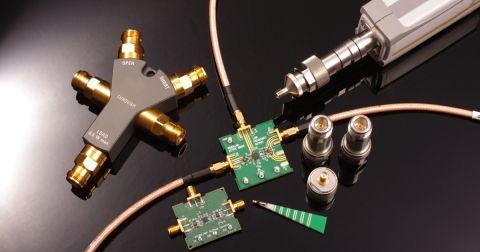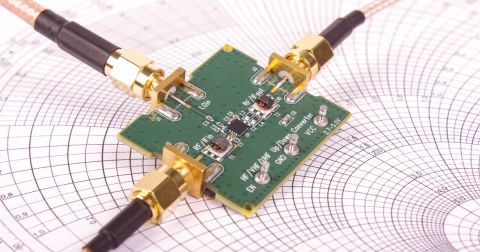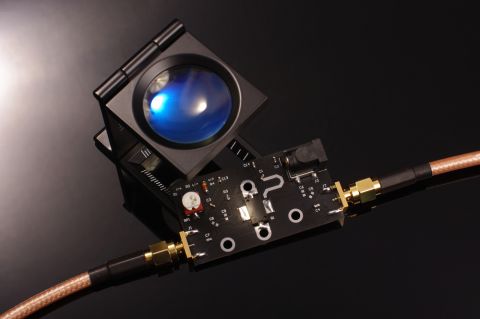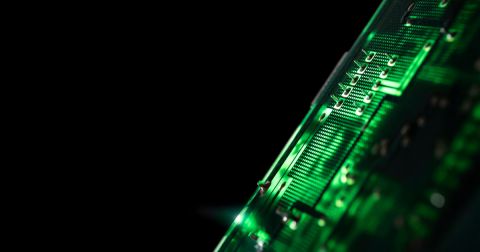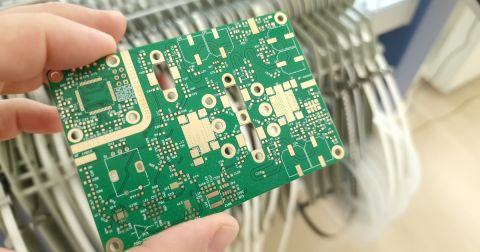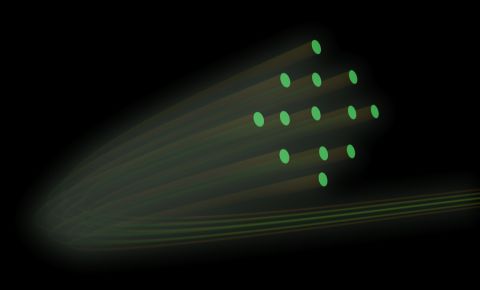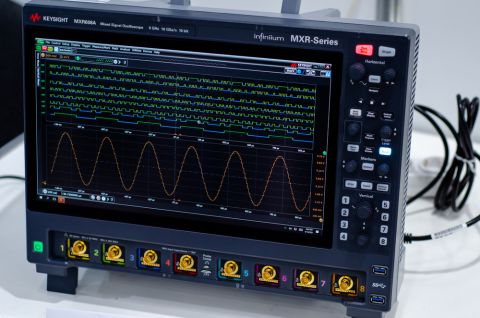PCB Design for Radio-Over-Fiber Technology

It’s possible that radio-over-fiber technology is one of the least discussed aspects of fiber telecom networks. However, it stands to be one of the many portions of telecom infrastructure for bringing broadband wireless access to remote areas. This approach is likely to play a major role for future 5G infrastructure in rural areas where a standard wireless backhaul is not possible or cost-prohibitive.
Just like any other electronic system, radio-over-fiber links require PCBs. Radio-over-fiber is designed for passive optical networking, where the extracted RF signal is steered to its destination without active electronic components. This provides an extremely fast solution for faster data transfer in telecom networks. It is also scalable up to THz frequencies. Many engineers in the research community are focusing on light sources and fundamental infrastructure for this technology, but board designers also have a role to play in ensuring accurate signal extraction and routing at the Tx/Rx sides of a radio-over-fiber link.
What is Radio-Over-Fiber?
Radio-over-fiber is a method for transmitting RF signals to a distant receiver in passive optical networks. In radio-over-fiber, a radio signal is used to apply amplitude modulation to an optical signal from an infrared laser diode. This optical signal can then be sent through a standard single-mode fiber, providing reach up to ~20 km. In earlier radio-over-fiber research and development, the output from a laser diode was modulated with the desired RF signal, and the output from the diode was coupled to a fiber using a standard transceiver. This method was limited in terms of the frequencies that could be transmitted were limited near WiFi frequencies due to the turn-on and recovery time of most laser diodes and photodiode receivers.
The primary advantage of radio-over-fiber technology is that it does not suffer from the same issues of attenuation as coax cable, allowing it to reach longer distances that cannot be reached with a traditional wireless backhaul. This technology offers much greater bandwidth over existing optical solutions without digital-to-analog conversion (DAC).
At the receive side of a radio-over-fiber link, a photodiode is used to receive the optical signal, and an all-optical or GHz envelope detector is used to extract the encoded microwave signal. Envelope detection and square law detection circuits for receiving and demodulating signals are actively being studied. This allows extraction of a GHz RF signal, which can be used with a variety of modulation schemes (e.g., up to digitized QAM for LTE, WiFi, or other RF protocols). An high-level overview of the architecture used in radio-over-fiber transmission is shown below.

The architecture shown above can also be used with DWDM in a BBU (Tx end). An arrayed wavelength grating unit can be used to separate different carriers and route them to different Rx ends. This provides a simple way to route analog radio-over-fiber signals to multiple receivers in a passive optical network.
Radio-Over-Fiber Modules
To generate and receive the desired RF signals and optical signals, currently there are no PCB-mount modules that include all the required components for an radio-over-fiber interface in a highly integrated component. Radio-over-fiber modules exist as bulky modules that are mounted off the PCB and connect to an RF link through an SMA connector. An example is shown below; this component has three pins on it for power, and these could be mounted to a through-hole land pattern, such as on a power supply module. However, to receive and convert the optical signal to output a radio signal, the required circuitry is integrated into the module.

The above module is intended to operate at 6 GHz carrier with narrow bandwidth; the optical fiber link operates from 1100 to 1620 nm with 40 km range. Example applicaitons being targeted are mobile network backhaul and K-/S-/L-band networking. The SMA output from the above Thor fiber module can then connect to a PCB with a standard SMA cable. The routing into/out-of the SMA connector on the PCB then follows standard routing procedures for RF signals.
Other modules have XFP connector (SFP28) form factor and can plug into a standard surface-mount connector on a PCB. An example from Finisar is shown below. In this example module, the transceiver outputs at 1.2 GHz over the edge connector onto the host PCB. The routing away from the XFP connector also follows best practices for RF links (matched impedance, coplanar waveguides).

Routing RF Lines for Radio-Over-Fiber Systems
Routing into these two types of systems involves routing an RF signal into two possible types of components:
- An SMA connector, preferrably a vertical connector
- An SFP, XFP, or similar connector for the optical module
SMA connectors require a wideband signal transition that can provide the required bandwidth. Generally, routing with a coplanar waveguide structure on the outer layers of the PCB will be sufficient to reach into the connector with low return loss up to 10's of GHz as long as there are no via transitions.
An example of this type of wideband signal transition using a blind via is shown below (area circled in yellow). The footprint used here includes a small array of blind stitching vias to set the via transition impedance to a target value.

For routing into the SFP/XFP or similar connector for an optical module, follow the same strategies you would normally follow with digital channels running at high Gbps data rates. This is because those lines will be able to handle broad bandwidths associated with digital signals, so they will not have a problem also handling high-frequency RF signals.
Looking to the Future: Mode Combs, PICs, and THz Frequencies
In both types of radio-over-fiber systems discussed above, transmission is a relatively easy process with standard optical components. The challenge in these systems is extraction of the RF signal with minimal distortion as it is guided into the receive channel in the system. After being received, the signal could be used with other standard RF circuitry. There are some important application areas that become enabled through this type of system that will be useful in photonic systems in the future:
- Generation of optical mode combs for very fast pulses
- Generation RF signals at very high GHz or THz frequencies
- Direct interfacing to photonic integrated circuits and microwave photonic integrated circuits
Generation of THz frequencies is not something that can be done with an integrated optical module just yet as there are no commercial components operating at these frequencies. THz frequencies can be reached by beating two free running lasers lasers through heterodyning, which produces an amplitude modulated output. Tunable vertical cavity surface emitting lasers (VCSEL) are currently being used to probe anywhere from low GHz frequencies up to THz frequencies, and these could be integrated into future optical modules for radio-over-fiber systems. As this can bring signal frequencies up to THz values, this region is still uncharted territory for the vast majority of designers in the industry. Academia has been working on THz interconnect design and modeling for PCBs for some time, and there is plenty of innovation to be seen in this area.
One important application area for radio-over-fiber technology, specifically for mode combs generated at the Tx end of a link, is for optical transmission of digital data while interfacing with photonic integrated circuits. Mode combs can be used to produced a very high frequency beat signal (e.g., several GHz), which is then used as a clock, for modulation, or interfacing with other RF circuits. The power of radio-over-fiber is the ability for the optical carrier signal to transport this GHz beat signal over long distances. This is just one area of emerging microwave techniques that will enable unique applications in the near future.
If you’re working on new designs for radio-over-fiber technology, you’ll need the right PCB design software to create your board layout. The routing features and unique design environment in Altium Designer® is ideal for building cutting-edge boards for high frequency RF systems. Altium Designer also gives you access to a complete set of post-layout simulation tools for signal integrity analysis.
Now you can download a free trial of Altium Designer and learn more about the industry’s best layout, simulation, and production planning tools. Talk to an Altium expert today to learn more.

